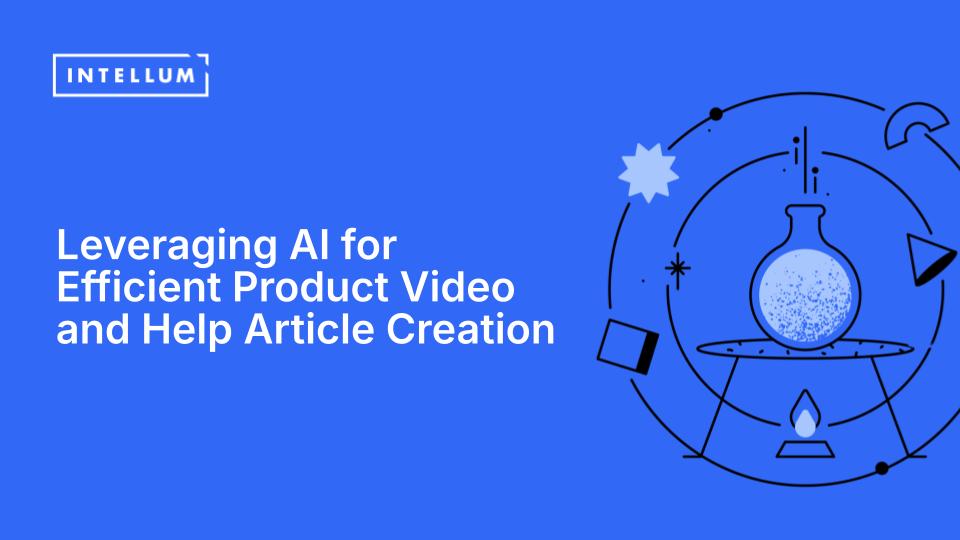Workplace instructional design succeeds or fails based on engagement and efficacy. When you empower learners with the right education at the right time, you unblock whatever obstacles they face and help them realize your product’s value, faster.
Easier said than done. With so many potential learners out there, you can’t afford to take a one-size-fits-all approach. And unlike traditional Learning & Development, where you know each individual who will engage with your education efforts, customers are much more of an unknown. As a result, it’s often hard to pinpoint what education to serve up and when—especially when your education team is strapped for time and resources.
Learner personas can help make this process a bit easier. By developing clear learner personas, you can add direction to your educational efforts and drive value for the business.
How, exactly? Read on to learn how to build these learner personas from the ground up.
What Are Learner Personas?
Learner personas are fictional characters designed to help you understand real people—in this case, learners. Just as a UX design team creates user personas to craft a better product, instructional designers use learner personas to build effective education programs.
Learner personas help you categorize your target audience according to common characteristics. Each persona may represent a different job function, for instance, or a unique set of skills and values.
Benefits of Learning Personas
Creating an education program without developed personas is like driving a car without GPS. Sure, you’ll get somewhere—but there’s no guarantee you’ll go in the right direction.
“Know your audience” is an adage for a reason. According to our 2022 Examining the State of Organizational Education Report, companies that tailor their education to multiple audiences tend to experience improved retention more frequently than those that educate a lone audience.
Why? When you understand learning personas, you build empathy with your target audience. You familiarize yourself with why they’re looking to learn, what training goals they’re looking to achieve, and how they absorb information best. In short, you discover what their ideal learning experience looks like.
You can’t spell “personalization” without “persona.” By thinking from the learner’s point of view, you can deliver the exact education they need to succeed with your product or service. Do that, and you’ll see greater customer satisfaction, and ultimately greater retention.
How to Develop Learning Personas
Many learning professionals mistake persona work as strictly marketing’s domain—but that couldn’t be farther from the truth. Creating learner personas is an essential part of any well-oiled customer education strategy.
Interested in developing learning personas, but not sure how? Get started with these three tips:
1. Analyze your existing customer base.
To develop an effective education program for your learners, you too must be willing to learn. Collaborate with your sales, marketing, and business intelligence teams to get a detailed breakdown of your customer base. Consider asking:
- What industries do our customers represent?
- What is our average customer size? Biggest? Smallest?
- Who are our typical buyers? What are their job titles?
- What pain points lead them to purchase our offerings?
Essentially, you want to familiarize yourself with the voice of the customer. Read up on any buyer personas your marketing team has created. Shadow a few sales calls to understand why prospects convert in the first place. The more you understand who your clients are, the easier it becomes to personalize your educational efforts.
2. Explore why clients like to learn.
Your buyer personas are important to understand, but they’re not a substitute for your learner personas. Whereas a buyer persona represents someone with purchasing power at a company (e.g., a director, the CEO), a learner persona can—and often will—be broader in nature.
Take a company-wide communication tool like Slack or Microsoft Teams. A buyer would likely be a senior leader or head of IT. However, a learner could be anyone who uses the tool—essentially, the entire company.
With such a massive pool of potential learners, establishing clear personas is crucial. Probe further into the minds of your clients by asking the following questions:
- Which clients tend to require or seek support?
- What are their pains and needs?
- How can we solve those pains?
- In what ways do they learn best?
- What prompts them to learn something new?
You can certainly ask yourself these questions—even better, though, is to ask subject matter experts. Book time with your customer success team to explore how and when clients get stuck interacting with your offerings. If possible, reach out to actual clients who are willing to share their experiences. (Don’t be shy: Marketers and UX researchers do this all the time.)
3. Write out your learner personas.
Now comes the fun part. With data recorded, you can sit down—yourself or with a small team—and put your ideas to paper. This design process requires a fair bit of creativity, so lean into it! Give each persona their own backstory, complete with job title and jobs to be done with your education content.
The goal is to create representative depictions of your learning base. That way, when you have actual clients stress testing your new course or certification, you can rest easy knowing it’s reaching the ideal audience—and providing real value.
Get Monthly Tips to Craft Effective Personas (and More)
There’s so much more to learn about smart persona crafting. Thankfully, the conversation doesn’t have to end here. Subscribe to our monthly newsletter, and get the latest learning tips, articles, and events sent straight to your inbox.






